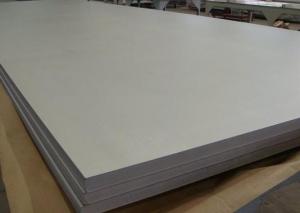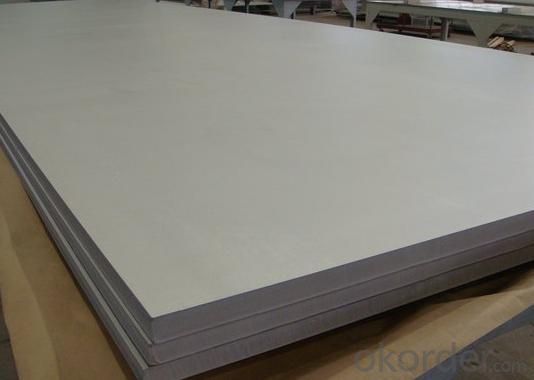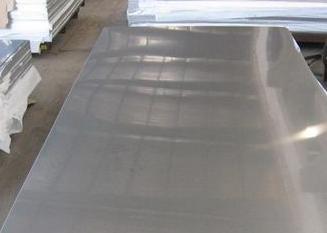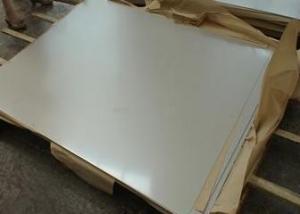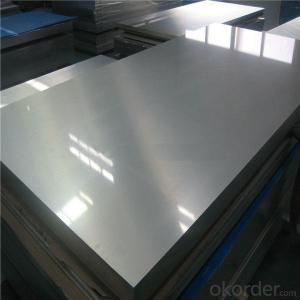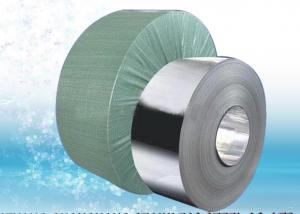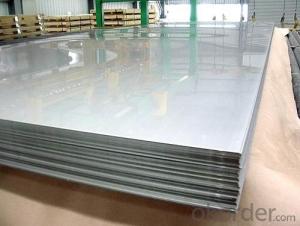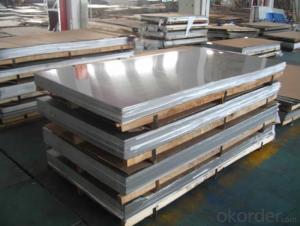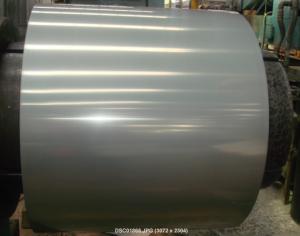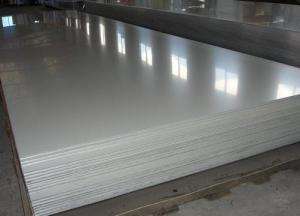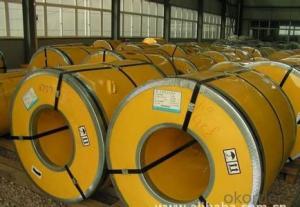AISI 201 Stainless Steel Sheet
- Loading Port:
- China Main Port
- Payment Terms:
- TT or LC
- Min Order Qty:
- 1 Ton m.t.
- Supply Capability:
- 1000 Tons Per Month m.t./month
OKorder Service Pledge
OKorder Financial Service
You Might Also Like
AISI 201 Stainless steel sheet
1. Chemical composition
|
C |
Si |
Mn |
P |
S |
Ni |
Cr |
|
max0.15 |
max1.00 |
5.50-7.50 |
max0.06 |
max0.03 |
max1.00 |
16.00-18.00 |
2. Mechanical properties
|
Yield Strength |
Tensile |
Elongation |
Hardness (HV) |
Hardness (HRB) |
|
245 |
640 |
40 |
253 |
100 |
3. Standard: AISI, ASTM, GB, EN, DIN, JIS
4. Surface: 2B, NO.1, BA, NO.4, Hairline, SB, Mirror finish, Anti-skid, Cherkered etc.
5. Size: Thickness: 0.3-3mm (cold rolled), 3-40mm (hot rolled)
Width: 1000mm or 1219mm or 1240mm for cold rolled, 1500mm for hot rolled.
Length: As customers' request.
6. MOQ: 1 Ton
7. Payment terms:T/T or L/C
8. Packing: Seaworthy package with wooden or Iron pallets with the paper and the steel strip, or as customers' request.
9. Delivery time: Usually about 7 days after we confirming the order, or according to your quantity.
If you have any question or demand, pls feel free to contact me.
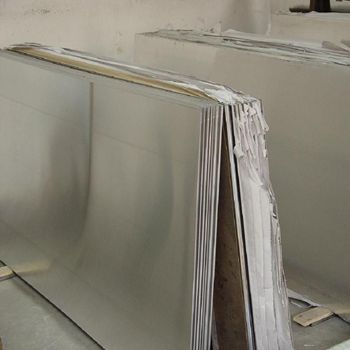

- Q: Can stainless steel strips be used in automotive applications?
- Certainly, automotive applications readily benefit from the use of stainless steel strips. Renowned for its exceptional corrosion resistance, durability, and strength, stainless steel emerges as the ideal substance for a wide array of automotive components. Exhaust systems, fuel tanks, body panels, trim, and even structural elements frequently employ this material during their manufacturing process. Stainless steel strips can be shaped, welded, and fabricated into diverse sizes and forms, offering automotive design with unparalleled versatility and flexibility. Moreover, the aesthetic charm and long-lasting visual appeal that stainless steel preserves over time contribute to its widespread popularity among automotive applications.
- Q: How do stainless steel strips perform in the presence of chlorine?
- Stainless steel strips generally perform well in the presence of chlorine. Stainless steel is known for its corrosion resistance properties, and it forms a passive chromium oxide layer on its surface that provides protection against oxidation and corrosion. This oxide layer acts as a barrier, preventing chlorine from reaching the underlying steel and causing corrosion. However, in certain conditions, stainless steel can still be susceptible to localized corrosion, such as pitting and crevice corrosion, in the presence of high concentrations of chlorine or in the presence of other corrosive agents. It is important to consider the specific grade of stainless steel being used, as some grades may have better resistance to chlorine than others. Additionally, proper maintenance and cleaning procedures should be followed to ensure the longevity and performance of stainless steel strips in chlorine-rich environments.
- Q: Can stainless steel strips be used in jewelry making?
- Yes, stainless steel strips can be used in jewelry making. Stainless steel is a durable and hypoallergenic material that can be shaped and polished to create beautiful and long-lasting jewelry pieces. It is commonly used in the production of rings, bracelets, necklaces, and other accessories.
- Q: What are the surface finishes available for 111 stainless steel strips?
- There are several surface finishes available for 111 stainless steel strips. Some common finishes include: 1. No. 1 Finish: This is a hot-rolled, annealed, and pickled finish that is characterized by a rough, dull appearance. It is commonly used for industrial applications where appearance is not a priority. 2. No. 2B Finish: This is a bright, cold-rolled finish that is commonly used for applications that require a smooth and reflective surface. It is often used in decorative and architectural applications. 3. No. 2D Finish: This is a dull, cold-rolled finish that is similar to the No. 2B finish but has a slightly rougher surface. It is often used for applications that require a smooth surface but do not require a high level of reflectivity. 4. No. 3 Finish: This is a semi-polished finish that is obtained by using abrasives with a finer grit compared to the No. 2D finish. It provides a smoother and more uniform surface, making it suitable for applications that require a visually appealing finish. 5. No. 4 Finish: This is a brushed finish that is achieved by using abrasive belts or brushes to create a consistent pattern of fine lines on the surface. It is commonly used for decorative purposes, such as in architectural and kitchen applications. 6. No. 8 Mirror Finish: This is a highly reflective finish that is achieved by polishing the surface to a mirror-like appearance. It is often used in applications that require a high level of reflectivity, such as in mirrors or decorative items. These are just a few of the surface finishes available for 111 stainless steel strips. The choice of finish depends on the specific requirements of the application, including aesthetics, corrosion resistance, and functionality.
- Q: How do you join stainless steel strips together?
- Stainless steel strips can be joined together using various methods such as welding, soldering, or using mechanical fasteners such as screws or bolts. Welding is the most common and effective method, which involves melting the edges of the strips together to create a strong bond. Additionally, soldering can be used for thinner strips, where a filler metal is melted between the strips to join them. Mechanical fasteners provide a non-permanent solution and can be used when disassembly might be required.
- Q: Can stainless steel strips be used in transportation applications?
- Yes, stainless steel strips can certainly be used in transportation applications. Stainless steel is known for its high strength and durability, which makes it suitable for various transportation components. It is commonly used in the automotive industry for manufacturing parts such as exhaust systems, body panels, and trim. Stainless steel strips are also used in the aerospace industry to make aircraft components, including frames, brackets, and fittings. Additionally, stainless steel's resistance to corrosion and oxidation makes it ideal for marine transportation applications, such as boat building and shipbuilding. Overall, stainless steel strips are versatile and reliable materials for transportation applications due to their strength, durability, and resistance to environmental factors.
- Q: Are stainless steel strips resistant to fire?
- Yes, stainless steel strips are highly resistant to fire. Due to their high melting point and low thermal conductivity, they can withstand extreme temperatures and prevent the spread of fire.
- Q: Can stainless steel strips be used for metal stamping?
- Yes, stainless steel strips can be used for metal stamping. Stainless steel is a popular choice for metal stamping due to its high strength, corrosion resistance, and durability. It is commonly used for various applications such as automotive parts, appliances, and electrical components. Stainless steel strips can be easily formed, bent, and stamped into different shapes and sizes using metal stamping techniques. The characteristics of stainless steel, such as its hardness and resistance to wear, make it suitable for producing precise and intricate designs through metal stamping processes. Overall, stainless steel strips are a versatile material that can be effectively utilized for metal stamping purposes.
- Q: What are the recommended cleaning and maintenance practices for 111 stainless steel strips?
- The recommended cleaning and maintenance practices for 111 stainless steel strips include regular wiping with a mild detergent solution and a soft cloth to remove any dirt or grime. Avoid using abrasive cleaners or scrubbers as they can scratch the surface. Additionally, it is important to dry the strips thoroughly after cleaning to prevent water spots or rusting. For maintenance, periodic polishing with a stainless steel cleaner can help maintain the shine and prevent oxidation.
- Q: Can stainless steel strips be used in medical applications?
- Stainless steel strips possess the capability to be utilized in medical applications. The utilization of stainless steel is prevalent in the medical field owing to its exceptional resistance against corrosion, high durability, and ease of being sterilized. Various medical devices and equipment, such as surgical tools, implants, dental instruments, and medical tubing, commonly employ stainless steel strips. The material's capacity to endure high temperatures and resist corrosion makes it an ideal choice for applications emphasizing cleanliness and sterility. Furthermore, stainless steel is biocompatible, ensuring it does not provoke any negative reactions upon contact with living tissue. On the whole, stainless steel strips are a suitable option for medical applications due to their strength, dependability, and compatibility with the human body.
Send your message to us
AISI 201 Stainless Steel Sheet
- Loading Port:
- China Main Port
- Payment Terms:
- TT or LC
- Min Order Qty:
- 1 Ton m.t.
- Supply Capability:
- 1000 Tons Per Month m.t./month
OKorder Service Pledge
OKorder Financial Service
Similar products
Hot products
Hot Searches
Related keywords

